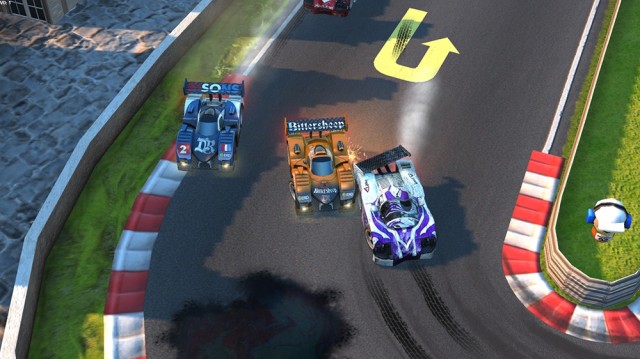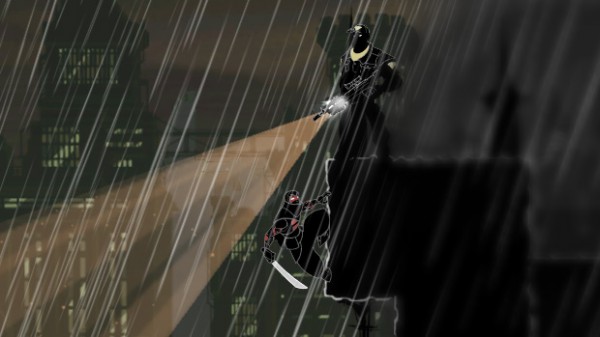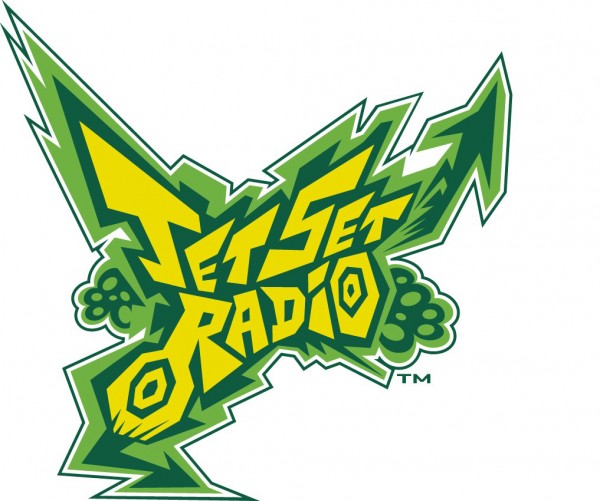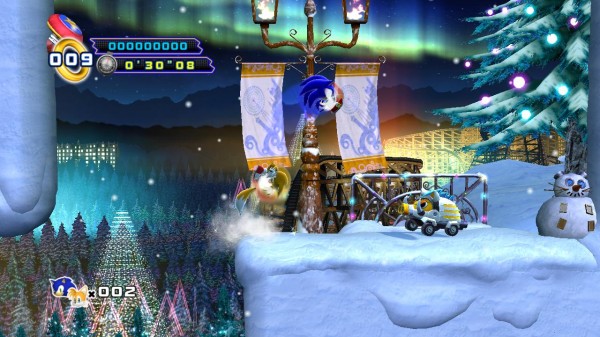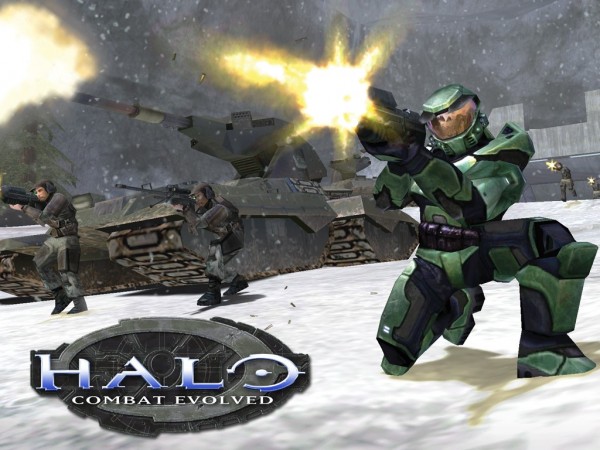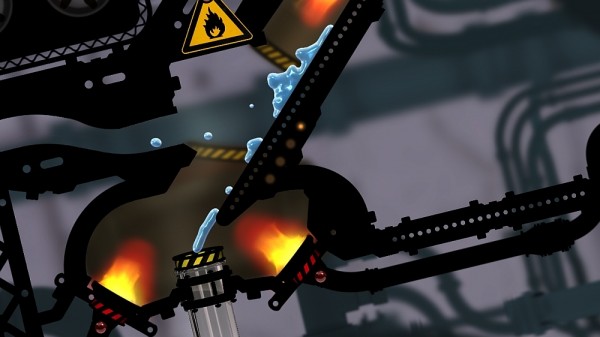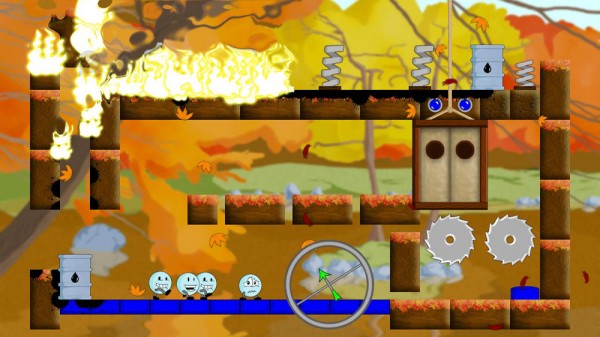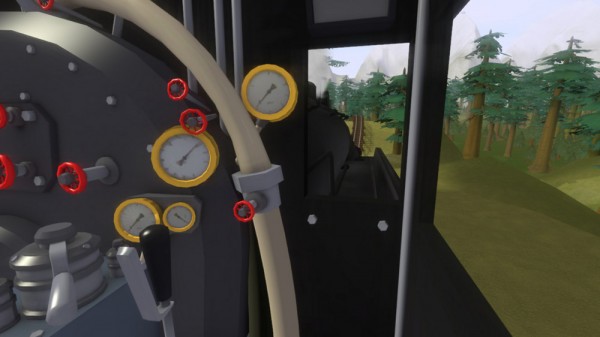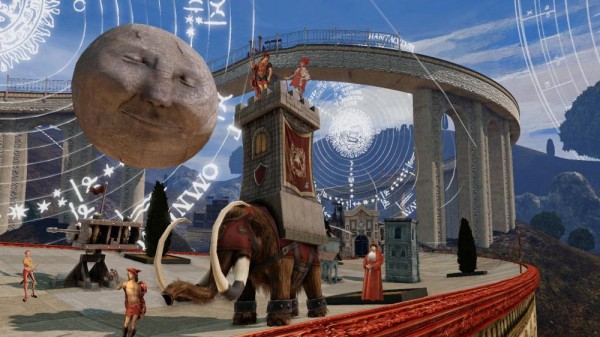 13 years ago
13 years ago
XBLA’s Most Wanted: Shenmue
One can’t skim the internet without running into a forum thread about the potential release of Shenmue 3–the next installment in a saga that began on Sega’s Dreamcast in November of 2000. Fans of the series sip on every drip of information on its development, though nothing of the sort truly exists. Shenmue’s creator, Yu Suzuki, even left Sega last year though some reports suggest he still has a consultant role within the company. Despite these gloomy prospects, die hard fans are still hopeful that the third of the series will finally breach the coffin it had been placed in so long ago.

William Shakespeare once said: “Love me or hate me, both are in my favor…If you love me, I’ll always be in your heart…If you hate me, I’ll always be in your mind.”
Had William Shakespeare been around in the 21st Century, we believe he’d be referring to Shenmue. Never will you discover a title so adored by critics and gamers and abhorred by others in the same demographic. You play as Ryo Hazuki, an unassuming young man on a quest to avenge his father’s death. In order to achieve this, Ryo must emphatically harass the locals of a small Japanese town by asking questions like the infamous, “Are you guys sailors?” Ryo finds himself in a lot of trouble during his exploration of leads, but he can always stop by the arcade and play an emulated, in-game version of a few arcade hits. Read More
 14 years ago
14 years ago
Bang Bang Racing review (XBLA)
Bang Bang Racing was developed and published by Digital Reality. It was released June 6, 2012 for 800 MSP. A copy was provided for review purposes
Many racing titles have graced XBLA lately but none have attempted to confuse the player with a dumbfounded title like Bang Bang Racing–the gameplay possibilities with a title like that can begin at generic demolition or race to NSFW hijinks. Joking aside, when you boost into the experience you’ll quickly discover a competent racer with tight controls and a heap of unlockable content but an excluded multiplayer component that places this title in a distant third.
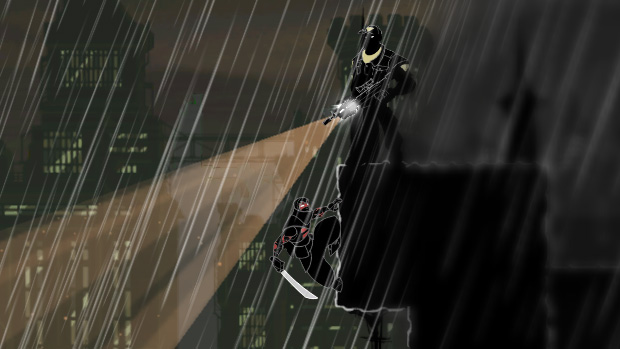 14 years ago
14 years ago
PAX East: Slash and hang in Mark of the Ninja
Klei Entertainment’s new title Mark of the Ninja throws a shuriken at a dart board for a development team used to creating violent brawlers like Shank , but the shift in genres is a natural fit considering how gruesome Mark of the Ninja really is. Gruesome in a delightful way, of course.
Our demo at PAX East began with our protagonist lurking in the shadows of a scarcely lit environment with lots of vents, rooftops and things to hang from with the grappling hook, so gamers can expect plenty of options to wipe out foes. And wipe out foes they shall, because the silent takedowns are visceral and satisfying to execute. When you approach an enemy from behind, instead of having a simple button press do the trick, the game enters into a quick time event (QTE) mode where players must press a combination of the analog stick and the X button to kill. It adds an extra layer of interaction rarely seen in a game of this type.
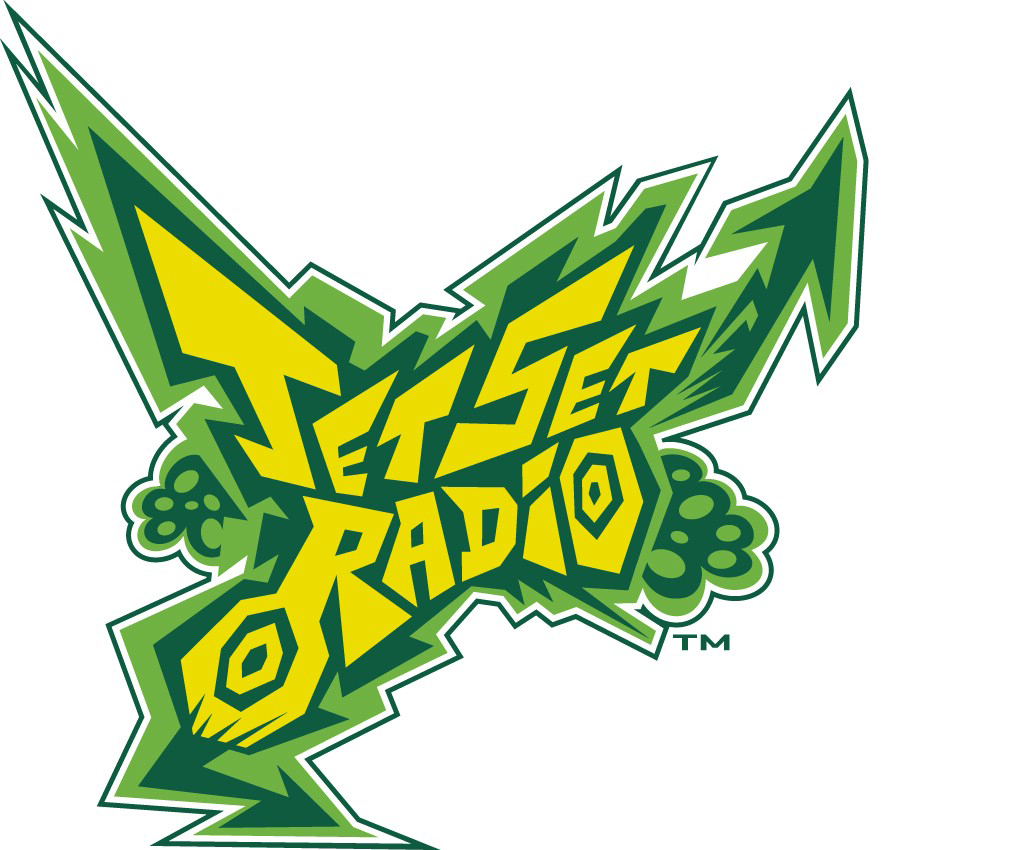 14 years ago
14 years ago
PAX East: Jet Set Radio grinds to our heart
If you ask any Dreamcast fan what game they’d love to see re-released on XBLA, Jet Set Radio is almost guaranteed to be mentioned. Luckily, Sega listened to the demands of its fan base and we got the opportunity to play the game at PAX East.
To the uninitiated, Jet Set Radio is a cell-shaded graffiti simulator where the goal of the game is to “tag” certain areas of a level with various graffiti art while simultaneously battling a police force that hunts you down. And hunt you down they will—their arsenal includes a pack of baton-wielding officers that bark “hut hut hut” when nearby, tanks, helicopters and even a police chief that ferociously discharges a firearm at you.
The demo we played featured the first level of the game: Shibuya-co. It’s a bright and colorful urban environment with plenty of areas to grind, tag and cause general mischief in. Fans of the original game will immediately notice that the visuals pop out even more in HD, which only adds to the unique aesthetic flair already present. The placement of the bus terminal, ramps and hovering cans of spray paint remain identical to the level in the original Dreamcast version, so it’s safe to assume that levels will be similar in layout.
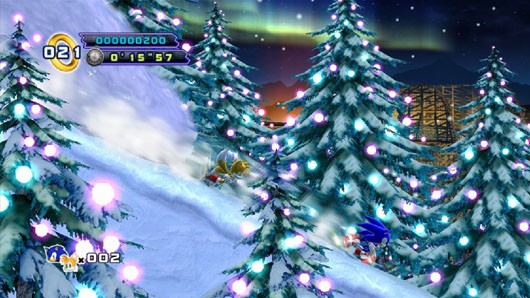 14 years ago
14 years ago
PAX East: Sonic the Hedgehog 4: Episode 2 impressions
Sonic the Hedgehog: 4: Episode 1 didn’t exactly spin dash to fan’s hearts when it released in 2010–it contained a wonky physics engine and lackluster gameplay, but Sega plans to turn that perception around with its aptly titled sequel Sonic the Hedgehog 4: Episode 2.
The demo we played at PAX East had Sonic speeding through an act covered in blizzard conditions with huge snowballs gaining mass while fumbling toward our blue protagonist, so it was important that Sega’s promise to include retro physics and more refined gameplay were included to overcome the demo’s obstacles.
Sega has succeeded so far, sort of. The most obvious inclusion, the ability to harness Tails’ hovering skills to carry the grounded Sonic to distance ledges makes for an enjoyable distraction, but once vertical the overbearing weight of Sonic becomes apparent. He still needs more momentum to maintain a steady speed than his incarnations in the 90s, and any and all gameplay distractions like dropping straight down from flying high with Tails just makes Sonic seem heavier than a Hummer.
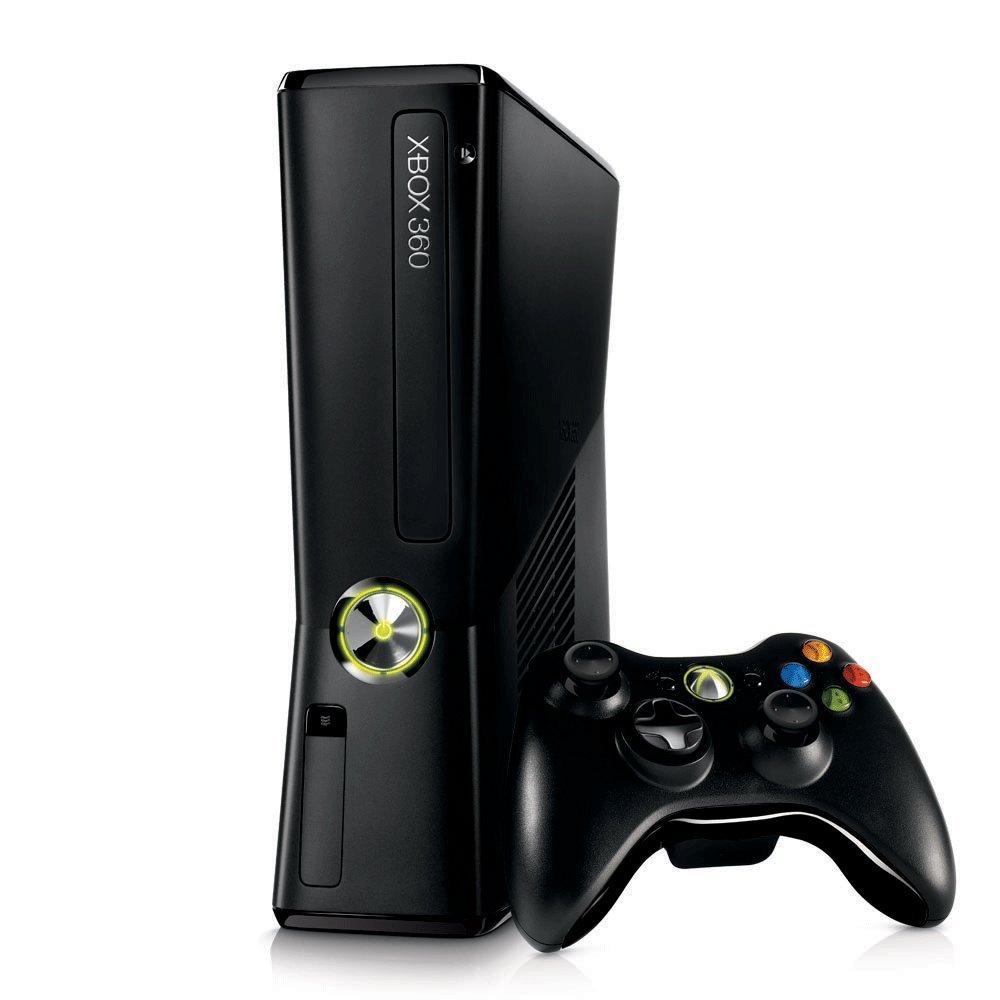 14 years ago
14 years ago
Weeknd Rant: Why I don’t want another Xbox
Microsoft’s first foray into the video game business was a risky and expensive maneuver. Despite having Halo as a stellar launch title and hardware capable of feats its competition couldn’t possibly produce, the original Xbox failed to maintain the flash and evolution of its distant brother: the Xbox 360–which is nearly celebrating its 7th anniversary on the market.
Console generations generally don’t exceed the pre-determined life expectancy predicted by its creators, but sometimes an unexpected boom of success prompts the decision makers to reconsider. Last November, Microsoft sold 1.7 million Xbox 360 consoles in the U.S., defeating Nintendo’s Wii and 3DS consoles by a large margin. Profit incites investors, potentially explaining why Microsoft has yet to formally announce a successor to its commercial darling. The last thing Microsoft wants to do is create competition for its own product.
 14 years ago
14 years ago
Puddle review (XBLA)
Puddle was developed by Neko Entertainment and published by Konami. It was released January 25, 2012 for 800 MSP. A copy was provided for review purposes.
We like to think of ourselves as glass half-full people. As game journalists, we have to be. Consider us surprised then to find that Puddle defends blind optimism as its core game mechanic, requiring the player to salvage a puddle of liquid (on most stages) against all types of elements (mainly hot stuff). The game may appear artsy and Braid or Limbo-esque, but it presents no philosophical argument against the dangers of protecting a pool of liquid without transparent reason, and you’ll often find yourself wondering why you’re playing the game to begin with (maybe that IS the philosophical theme? Har Har!).
There are only two buttons to concern yourself with: the left and right triggers. They’ll tilt the screen in two directions and are the only means of getting your pool of liquid from one area to the next. If this sounds simple to you, then you’re just like us. Unfortunately, once you get your hands on the controller you’ll find that the combination of tilt and physics is much harder to control and that most deaths are cheap deaths, resulting in unwarranted frustration.
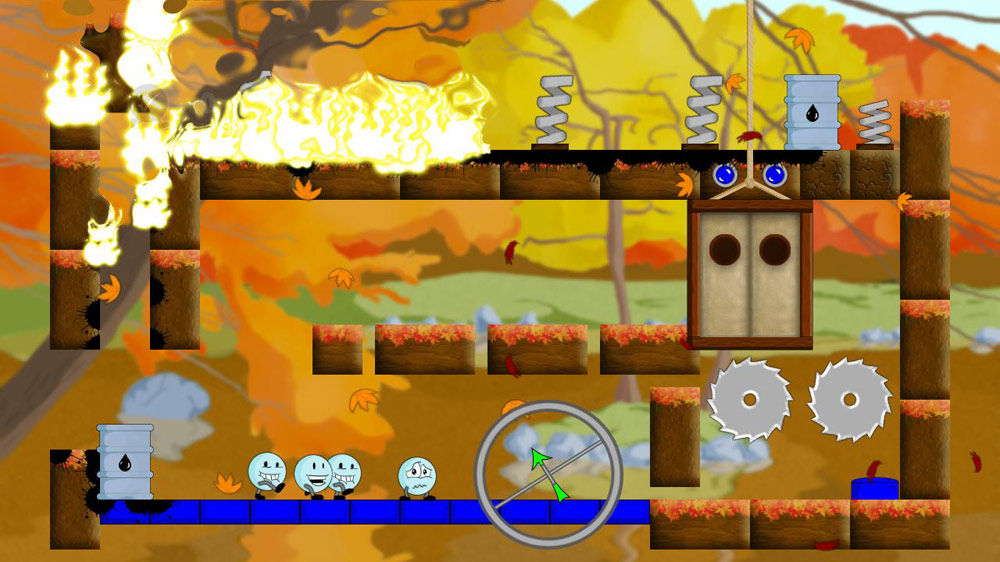 14 years ago
14 years ago
Cute Things Dying Violently review (XBLIG)
Cute Things Dying Violently was developed by ApathyWorks. It was released on August 24, 2011 for 80 Microsoft Points. A copy was provided by the developer for review purposes.
Despite its bloodthirsty title, Cute Things Dying Violently doesn’t require the death of walking smiley faces–Well, not exactly. Instead, it requires the sacrifice of some of these nameless optimists so that the others may live and have baby smiley faces of their own. Of course, you’re always welcome to dismiss the goal of the game and kill all of them but then you must welcome us dubbing you a genocidal maniac.
The goal of the game is to fling (let’s call them the walkers) the walkers into a black door that for all we know sends them into an inferno of fire and spinning spikes. You use the left thumbstick to control the cursor which you place on the walkers and the right thumbstick to flick them in any direction you please. The more you pull back on the right thumbstick, the more powerful the fling. But any number of killer obstacles will try and prevent this from being a smooth transition.
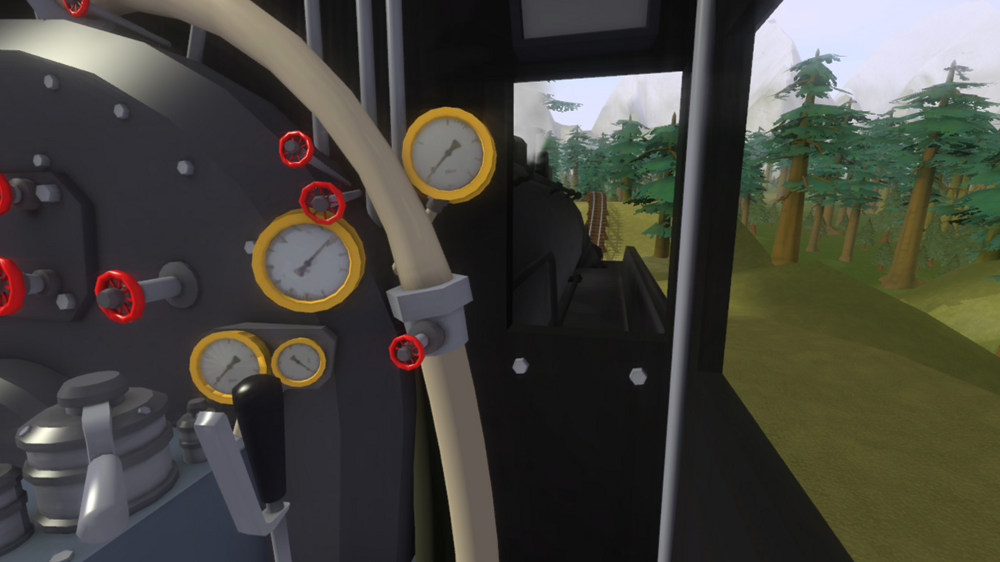 14 years ago
14 years ago
Train Frontier Express review (XBLIG)
Train Frontier Express was developed by Team Train Frontier and released on August 30, 2011 and retails for 240 MSP. A copy was provided by the developer for review purposes.
So many of us have a childhood love of toy trains. We let our imaginations run wild with our train sets. As the train moved along the tracks we would make choo choo noises with our voice. Sometimes we created fictional disasters that would throw the train off track and have it burst into imaginary flames, but hey, it was all good fun. If you were one of those kids (including the bout of destruction) then boy is there a video game for you!
Train Frontier Express is one of the titles in the Indie Games Summer Uprising promotion and deservedly so. Although there really is no “game” here or set of definable goals, it is the closest thing you’ll ever have to a model train simulator on the Xbox 360, and the freedom to share your creations with friends on Xbox Live places this into the top tier category of XBLIG.
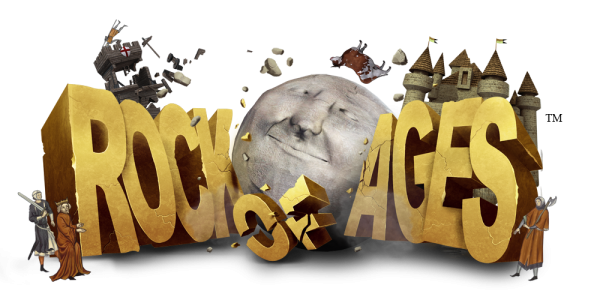 14 years ago
14 years ago
Rock of Ages review (XBLA)
Rock of Ages was developed by ACE Team and published by Atlus. It retails for 800 MSP. A copy of the game was provided for review purposes.
Rock of Ages is quite possibly the oddest game we’ve played on XBLA. It is an eclectic mixture of tower defense and Marble Blast Ultra. You travel through different eras of time challenging historical figures to a strange game of protect the castle. You’ll meet daunting characters like Vlad the Impaler that want nothing more than to push your face-of-a-rock off the cliff to weaken its ability to damage his castle gate, all while being treated to a Renaissance style of music that is one of the game’s best features.
Players who are familiar with tower defense games will feel right at home. You place defensive units up and down the narrow path to your castle wall in an attempt to thwart your challenger’s rock from reaching top speed to crash into your castle’s gate. In almost all instances, three consecutive dashes on you or your challenger’s gate will bring it down revealing a paper-like historical figure ready to be run over–so speed as well as proper defense are equally important.
If this setup sounds quirky that’s because it is. Not only is your rock anthropomorphic but it occasionally yells in terror when it falls of a cliff, which will happen often because a finite number of elephants, cows, catapults, towers, explosives and other obstacles will obstruct your path to the castle gate.

